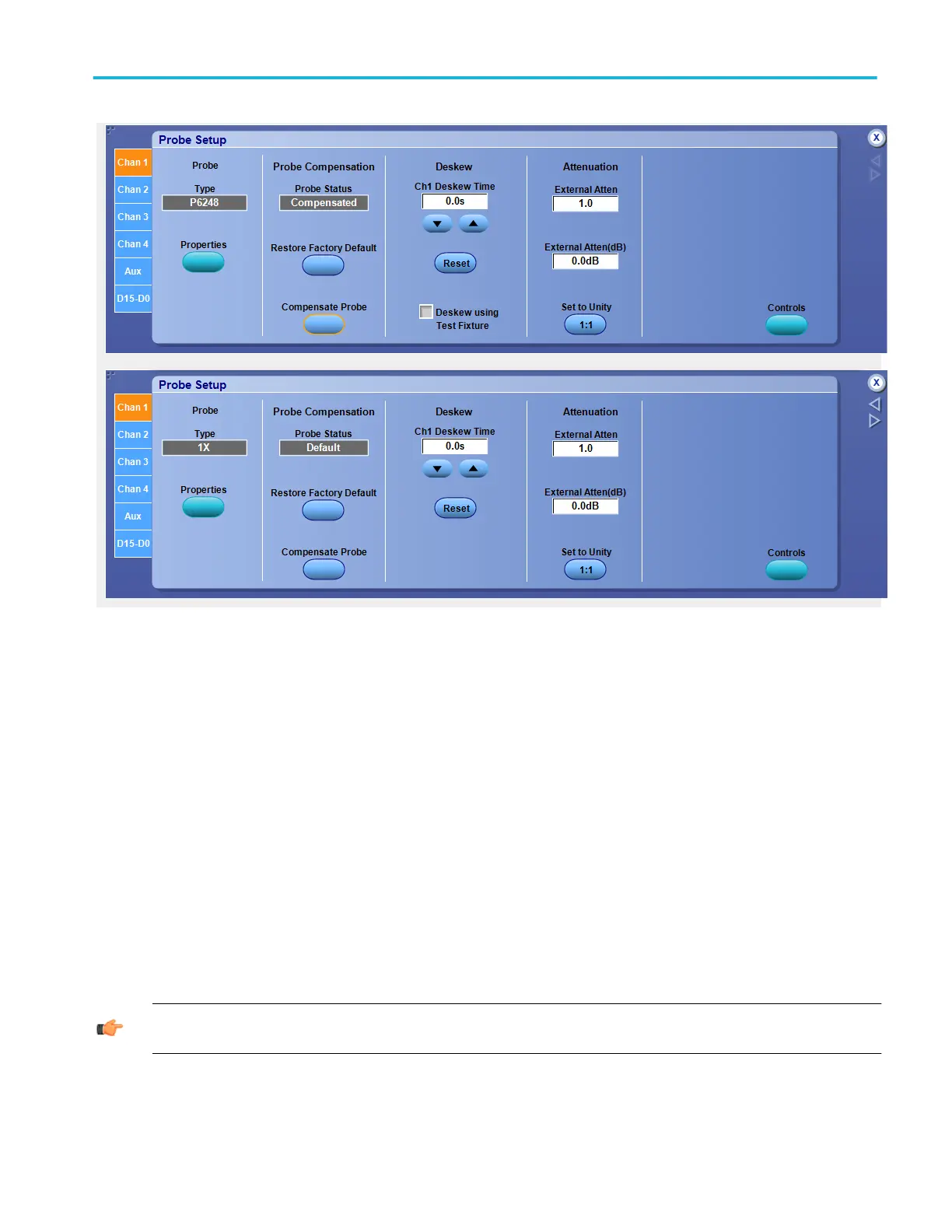To use
1. Connect a probe to a vertical input.
2. Press a front panel Ch <1–4> button to activate the channel.
3. In the Probe Setup window, click a Chan <1–4> tab to activate the controls for the input source.
4. Select the probe Type for the appropriate signal and ground connections of the probe compensation terminals.
For some probes, click the Probe Tip Select button and select the tip that matches the one you are using.
5. Click Restore Factory Default to clear the old values.
6. Click Compensate Probe to begin the procedure.
Behavior
When you perform a probe compensation on the selected channel, you optimize the instrument to make accurate measurements
for that channel and probe. The probe compensation makes significant performance improvements when performed with active
probes or older passive probes.
You can perform a probe compensation at any time to ensure measurements are taken with the highest possible accuracy.
Perform a probe compensation if you have changed probes since the last time a probe compensation was performed.
TIP. If you are compensating a passive probe, you must first compensate the low-frequency response of the probe. Refer to the
Probe Compensation Procedure for more information.
Some types of probes can be gain compensated, some can be offset compensated, and some can be compensated for both. If
the probe has a TekProbe/TekVPI interface, the instrument can determine the type of compensation needed and will display the
appropriate instructions when you perform the probe compensation procedure. Some probes cannot be compensated; for
information on these probes, refer to probe compensation restrictions.
Vertical setups
DPO70000SX, MSO/DPO70000DX, MSO/DPO70000C, DPO7000C, and MSO/DPO5000B Series 503

